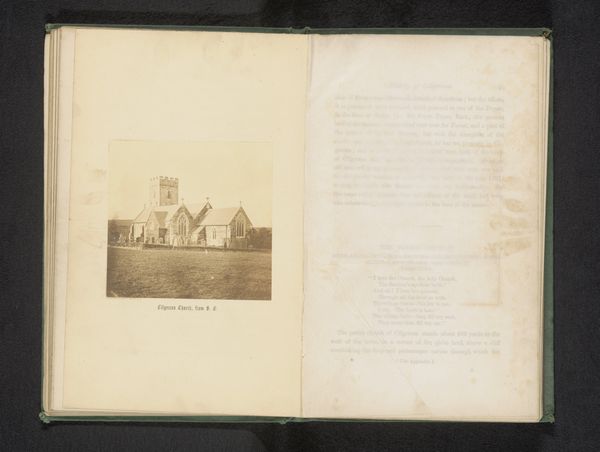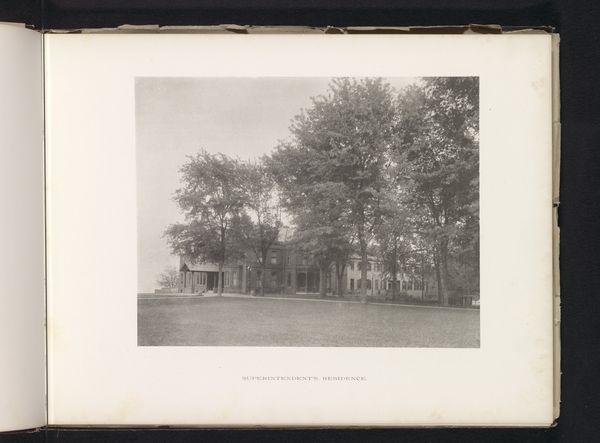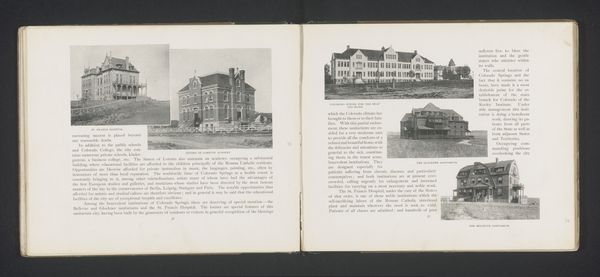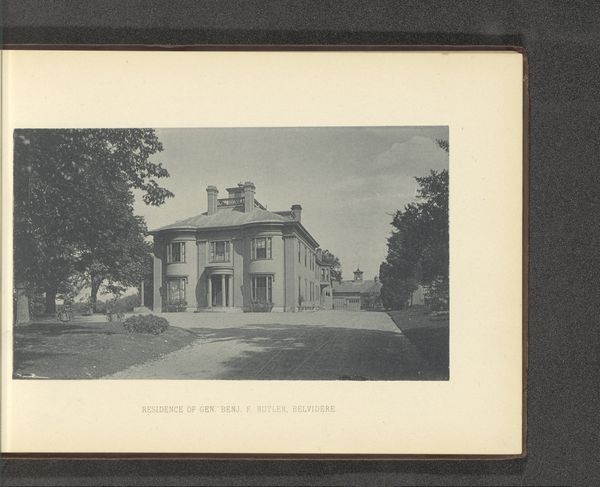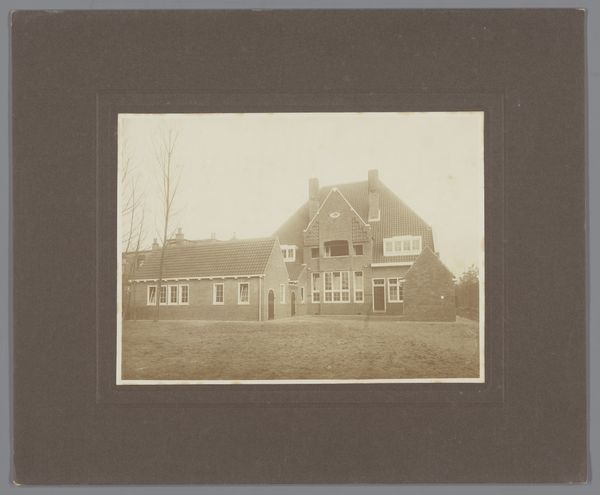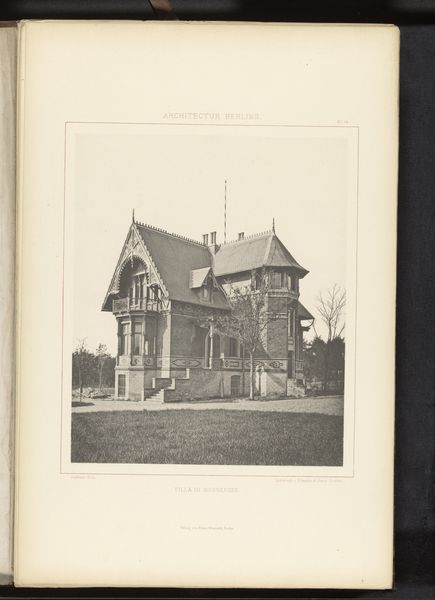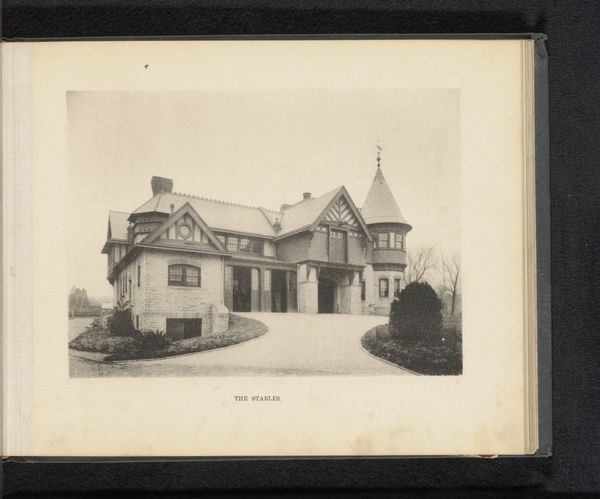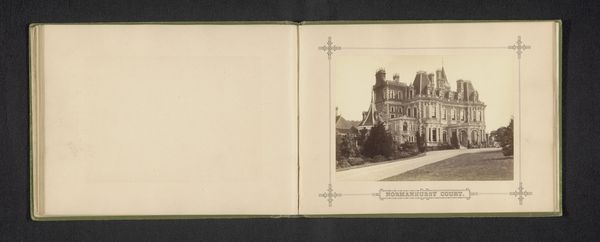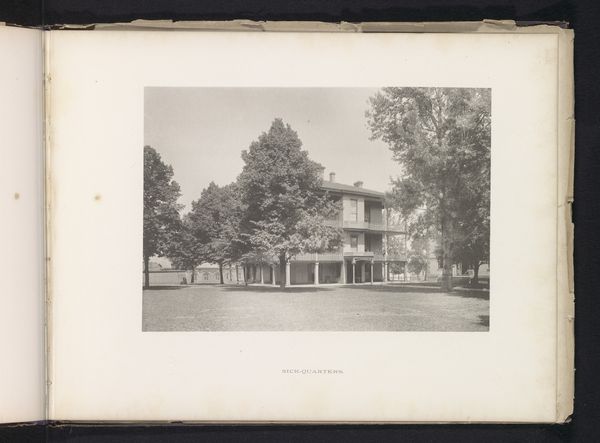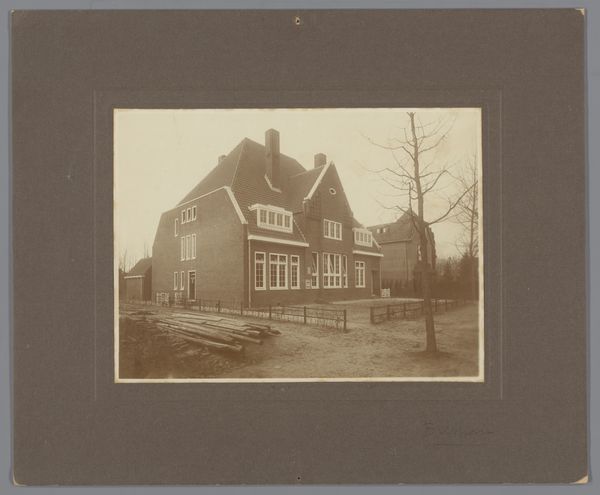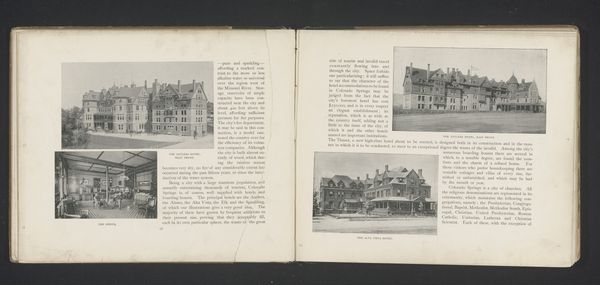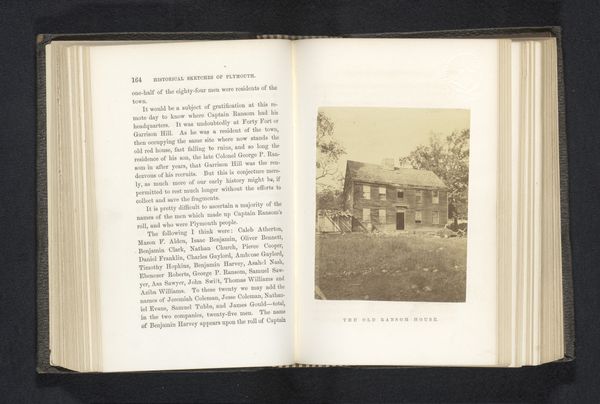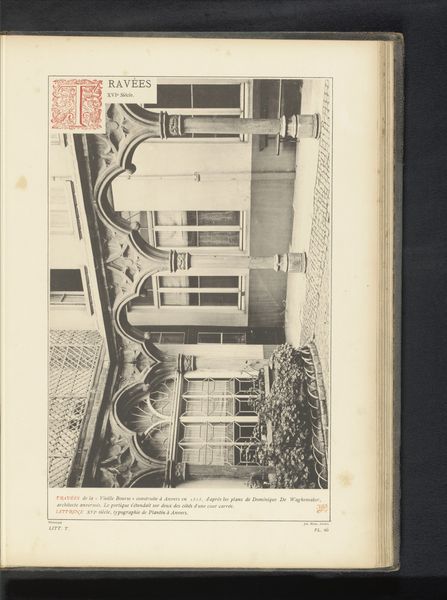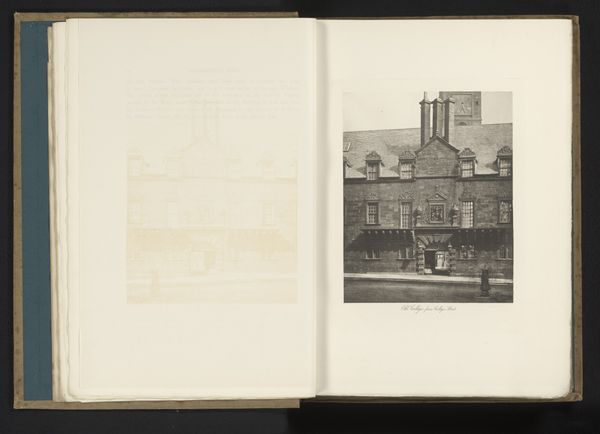
print, photography, architecture
# print
#
landscape
#
photography
#
architecture
Dimensions: height 229 mm, width 290 mm
Copyright: Rijks Museum: Open Domain
Curator: This is a page from a printed volume showing Borden Wood House. This photographic print dates to before 1889 and presents an architectural study within a landscape setting. What are your initial thoughts on this image? Editor: My first impression is the scale of the building – imposing yet somewhat subdued by the monochrome palette. The photograph, or perhaps the printing process itself, seems to flatten the textures of the building materials and landscape, leaving me yearning for some visual depth and dimensionality. Curator: That's a keen observation. It seems important to consider not just the architectural design but the technologies involved in representing this space, particularly how photography as a reproducible medium disseminated images of architecture to a wider audience. And of course, consider the specific labour involved in the entire lifecycle of print media during the 19th Century. Editor: Precisely. And look, the very act of including the building's floor plan within the page frames a narrative, not simply of domestic space, but of social power and class distinction as well. These kinds of country houses played important roles within local networks of economic and political authority, representing not just spaces of leisure, but seats of real societal influence. Curator: Right. And even the selection of vantage point for the photograph contributes, normalizing a certain perspective aligned with the landowning gaze while erasing all kinds of labor tied to construction, maintenance, and all related processes in such buildings. The pristine lawn, for instance, implies a lot regarding labour. Editor: Certainly. The idealized presentation obscures realities of material sourcing, labour practices and of course ownership and the economic inequalities implicit in landed gentry. It invites consideration about what the printer thought was photographically relevant and worthy of preservation, perpetuating the status quo. Curator: It reminds me to continually challenge traditional aesthetic hierarchies separating so-called “high” and “low” culture by acknowledging overlooked manual elements embedded within artistic practices that too easily mystify artistic activity in society. Editor: I completely agree. The way buildings were shown helped frame the status and position of the families who lived in them and their relation to wider systems of governance. What's fascinating to consider how the very making of such prints and circulating these representations contributed to constructing these dynamics. Curator: It's been rewarding exploring the confluence of technology, materials and labour and the cultural and societal role the Borden Wood House held as depicted in this photograph print. Editor: Absolutely. It underscores the complexities embedded within what initially seems like a straightforward visual record.
Comments
No comments
Be the first to comment and join the conversation on the ultimate creative platform.
